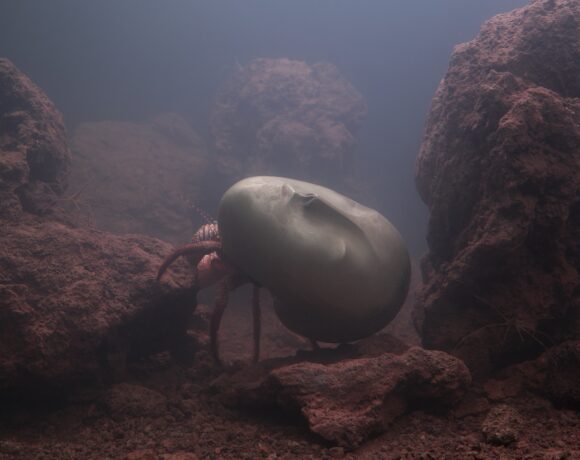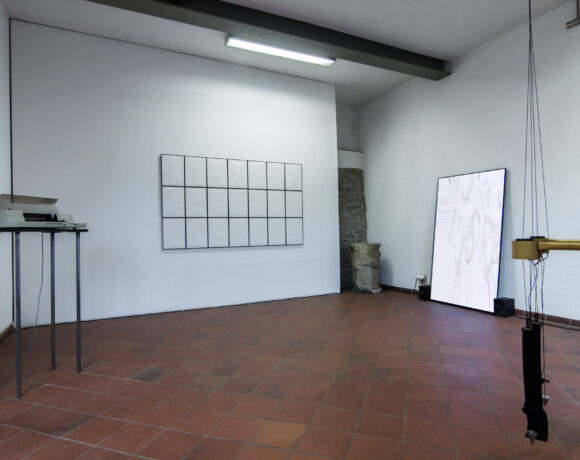Definition of animism: “typical conception of primitive peoples, according to which every phenomenon or thing in the universe is endowed with a soul and lives its own life, often believed to be divine and worthy of worship.” Starting from this conception of the “life of objects”, the E-Flux platform has organized, with the curator Anselm Franke, who has been at the head of Visual Art and Film at the Haus der Kulturen der Welt since 2013, a digital review and a research project in four episodes, called Animism.
The need to create and share this digital exhibition path arose during the pandemic period in which social distancing and the closure of museums brought to light the urgency of a rethinking of the exhibition experience by transferring it online, even if the digital formats, even the most “immersive” ones, cannot completely reproduce the body in space in relation to the works.
As we can read on E-Flux, generally the catalog of an exhibition is the return of the exhibition beyond the museum walls, which however does not claim to represent it in its complexity, but includes enrichments such as writings, essays and archival documents, not available only with physical experience; as reported by the platform “curator Anselm Franke is known for developing the essay exhibition format, which includes documents, artifacts, artwork and in-depth analysis”. The theoretical / discursive aspects in his curation play a fundamental role, especially the dialogue between artistic research and critical impact. According to Anselm Franke, the exhibition is a contradictory place in which to understand the complexity of the contemporary and the weight of a colonial past, questioning reality and the way in which it is perceived, creating a broader knowledge, which he defined as “undisciplined”. The digital exhibition itinerary therefore intends to return, with all its nuances, an exhibition, not only with images but also with texts, books and documents.
Animism is a phenomenon which is not only aesthetic: it includes a political vision of social inclusion, from the point of view of what we produce, objects, which have their own subjectivity and to which we transfer meaning. The exhibition has as its subject the overturning of the conception of modern history, not understood as the rise of science or the evolution of society, but rather as the production of non-free material; for example, you can refer to the collections of the great Western museums that show artifacts from countries such as Egypt, Greece etc. The objects inside these museums undergo a process of transformation that decontextualizes them, not exposing them in the countries of origin, making them colonial animated objects.
In the introductory text it is pointed out that “the non-animated as an imaginary division whose material organization in capitalism constitutes modern forms of sociality and power.” A narrative voice with the correlation of texts, images and artist videos reflect on the decolonization of the term animism, trying to “use it as an optical tool that highlights the practices of creating borders of a modern colonial discourse.”
The first episode of the exhibition, entitled A Report on Migrating Souls in Museums and Moving Pictures and released on November 24, 2020, investigates the physical and conceptual boundaries of museums and their function of containing “animated” objects. At the same time the multimedia contents proposed reflect on the role of animation through the realism of the images and on how they, having become collective, are transmitted by the cinema and the mass media, failing, however, to take into account the multiple cultural dimensions, embedded “in the categories of Western psychology “, as the authors of E-Flux also point out.
For example, in episode number 5, the film The Statues Also Die, 1953 by Chris Marker and Alain Resnais, investigates the function of the object in the museum, how its content is labeled and how we look at it in relation to colonial discourse. The film was commissioned by the literary magazine and publishing house Presence Africaine, founded by Alioune Diop, the literary center of the Parisian Negritude movement, which gave voice to a silent and forgotten Africa. We look at a work belonging to non-European cultures “as if it had its reason for being in the pleasure it gives us the intentions of the black person who created it, the emotions of the black person who looks at it, all this escapes us”, the two artists say. “When a man dies and has had a great influence in life he enters history, when statues “die” they enter art”.
However, Marker and Resnais’ discourse remains ambiguous, as their theory of an African philosophy is based on studies carried out by the French missionary Placide Temples. In 1930, after a short period in Belgium, he worked as a missionary in Congo, which was a Belgian colony.
He had a lot of influence in African culture for the publication of the book La Philosophie bantoue (1945), a pioneering text in giving voice to the complexity of African culture by beating racist setereotypes, as the Bantu people of sub-Saharan Africa and as well as the Ibo of Nigeria have not had any recognition from Western philosophers. Temples’ book argues that African philosophical categories can be identified through the language, culture, and metaphysical attributes of their lives. Despite his active commitment to ensure that the traits of African culture were not erased by colonial domination, his goal nevertheless remained that of converting African subjects to Christianity and implementing a process of authentic evangelization.
The narration of the film by Chris Marker and Alain Resnais remains charged with a denunciation of abuses and violence, the objects change in meaning when they are taken from one country to another in “a conquering cosmology”, challenging the categories and cultural divisions that are imposed. Animism is therefore not only the transposition of a vivifying quality to objects or nature, but it investigates the boundary between signs created by man and non-human things, between the conscious human subject and inanimate object, thus representing a fundamental role for the representations of colonized cultures in the non-European world; the works of art are the guides to explore these boundaries, while the museum, as we are used to conceiving it, is not the aesthetic and colonialist envelope that contains them.
Ljuba Ciaramella
Info:
Animism: digital exhibition curated by Anselm Franke on E-Flux
 Frame del film di Chris Marker and Alain Resnais, Les statues meurent aussi. 1953. Film, 16mm. Courtesy of Présence Africaine Editions
Frame del film di Chris Marker and Alain Resnais, Les statues meurent aussi. 1953. Film, 16mm. Courtesy of Présence Africaine Editions
 Collage di Max Ernst, A Little Girl Dreams of Taking the Veil (Rêve d’une petite fille qui voulut entrer au Carmel), 1880
Collage di Max Ernst, A Little Girl Dreams of Taking the Veil (Rêve d’une petite fille qui voulut entrer au Carmel), 1880
 Walt Disney, The Skeleton Dance, from the series Silly Symphony, 1929. 35mm film; 5:31 minutes. © Disney Enterprises, Inc. Tutti i diritti riservati
Walt Disney, The Skeleton Dance, from the series Silly Symphony, 1929. 35mm film; 5:31 minutes. © Disney Enterprises, Inc. Tutti i diritti riservati
 Kiyotaka Isako, “Cyber Soldier Porygon” (“Dennō Senshi Porygon”), Pokémon Episodio 38, Stagione 1, 1997. Animazione riprodotta a velocità 1/6; 21:07 minuti © OLM, Inc.
Kiyotaka Isako, “Cyber Soldier Porygon” (“Dennō Senshi Porygon”), Pokémon Episodio 38, Stagione 1, 1997. Animazione riprodotta a velocità 1/6; 21:07 minuti © OLM, Inc.
 Jimmie Durham, The Dangers of Petrification, 1998-2007. Vitrine, 39.37 x 78.74 x 29.53 in.; toni, 2 coltelli, 5 piatti in ceramica, 3 taglieri in legno e fogli manoscritti. Courtesy dell’artista e di kurimanzutto
Jimmie Durham, The Dangers of Petrification, 1998-2007. Vitrine, 39.37 x 78.74 x 29.53 in.; toni, 2 coltelli, 5 piatti in ceramica, 3 taglieri in legno e fogli manoscritti. Courtesy dell’artista e di kurimanzutto

I graduated in Painting at the Academy of Fine Arts in Florence, with a thesis on the role of the body in art, combining this topic with my visual artistic research. I am currently attending the second year of the two-year course of Visual Cultures and Curatorial Practices at the Brera Academy of Fine Arts. I intend to broaden my studies by attending a PhD in visual arts, thus deepening my critical-artistic research






NO COMMENT